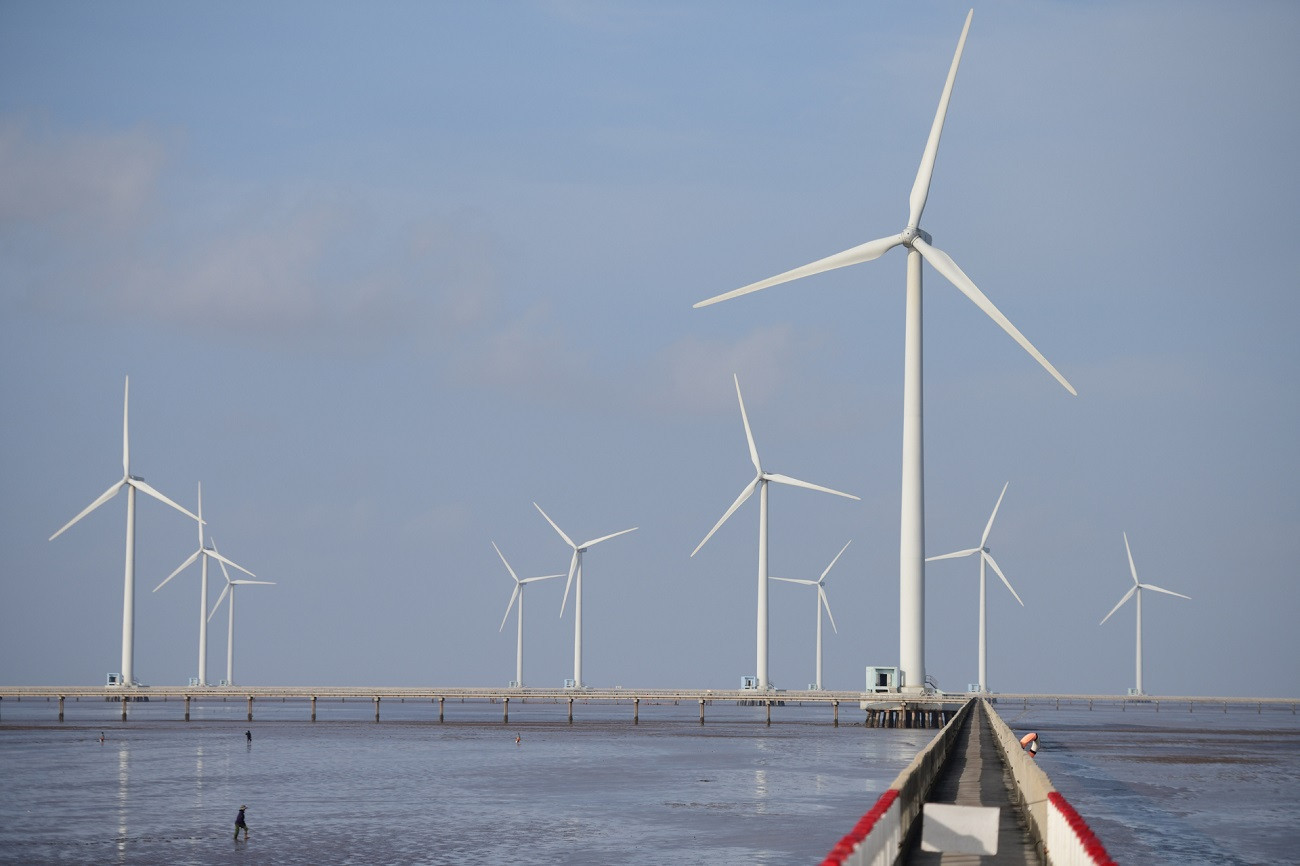
According to Electricity of Vietnam (EVN), Vietnam’s total electricity capacity has reached 78,300 MW, of which 26.5 percent is renewable energy, mostly developed by private investors.
In January-October this year, renewable energy output reached 29,87 billion kwh, or 13.2 percent of the total electricity output (solar electricity 22.65 billion kwh, wind power 6.91 billion).
This rate is high compared with other countries (the global average of 10 percent) such as the US, France, China, Indonesia and Thailand.
This is attributed to the preferential solar and wind power prices applied in 2017-2021. In Decision 11/2017 dated April 11, 2017, the Prime Minister set the FIT (feed in tariff) price of 9.35 cent per kwh, or VND2,200.
This means that projects that became commercial before July 1, 2019 enjoyed FIT prices for 20 years from the first day of operation.
This policy helped attract billions of USD of investment capital in renewable energy projects.
As of January 1, 2021, when the FIT mechanism ended, the total capacity of on-grid and rooftop solar power output was 16,500 MW, including 9,000 MW ground mounted and 8,000 MW rooftop solar power.
Solar power investors during that period could expect good profits.
An investor revealed that the investment rate of solar power in 2018 was VND18-20 billion per MW. As such, a 50MW would require capital of VND1 trillion.
Regarding power projects from Khanh Hoa southward, if the electricity price were VND2,000 per kwh, monthly revenue from selling power would be VND12.5 billion and VND150 billion a year.
A project would be able to take back investment capital within seven years if it used the capacity, while the remaining 13 years would be for profit-making.
However, this is only in theory. In fact, investors cannot use the designed capacity because of problems in transmission lines.
After June 30, 2019, the FIT price dropped from 9.35 per kwh to 7.09, or VND1,680 (ground-mounted) under Decision 13/2020, which took effect May 22, 2020.
The price still attracted investors because the rate then was lower than in the previous period.
That was why many solar power projects were bought by foreign investors after they were completed. The purchase of such projects ensures stable profits for investors for at least 20 years and the risks are very low.
As for wind power, after the Prime Minister released Decision 39 in 2018, the field also attracted many investors. The FIT price for wind power was 8.5 cent per kwh, or VND2,000.
By the end of 2021, total wind power capacity reached 4,126 MW.
New prices await
Wind and solar power have been a major interest of investors since 2017.
However, the FIT price scheme for wind and solar power expired in 2020 and 2021, and no new mechanism has been launched.
The eighth national electricity development (Plan 8) plan has not been approved, while Vietnam has also committed to reduce net emissions to zero by 2050.
In Plan 8, the Ministry of Industry and Trade has proposed that Vietnam promote renewable energy such as wind and rooftop power at reasonable production costs.
The eighth plan prioritizes developing onshore and offshore wind power.
In a statement dated September 23, 2022, Vietnam expects to have a total onshore wind power capacity of 16,281 MW and offshore wind power capacity of 7,000MW.
The draft of the eight national plan shows that the proportion of renewable energy capacity would increase from 21.6 percent in 2030 to 54.4 percent by 2050.
Stopping the FIT scheme and applying bidding will allow wind and solar power to have more competitive prices.
Luong Bang